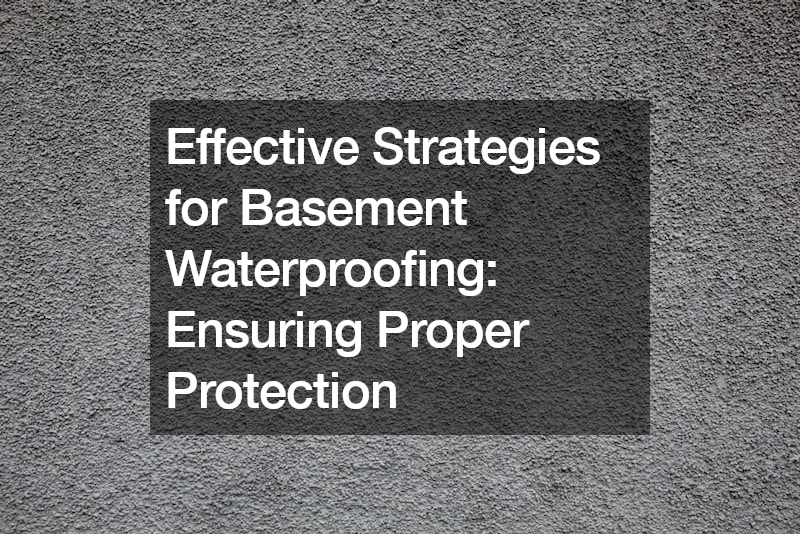Basement waterproofing is a crucial step in safeguarding your property from potential damage and ensuring that your basement remains a dry and functional space. Over the years, the perception of basements has evolved, with more people converting them into living spaces or utilizing them for storage. However, the risks associated with inadequate waterproofing persist. In this article, we will explore key strategies for effective basement waterproofing, emphasizing the importance of professional design and execution.
Historically, basements were viewed with skepticism by mortgage companies, considering them liabilities that could downgrade property value. While this perception has shifted, especially in urban areas like London where basements have become more common, the risks associated with improper waterproofing remain prevalent.
Ambitious basement projects, if not executed with precision, can lead to disasters, as seen in instances where buildings crumbled due to overambitious basement expansions.
One essential aspect of basement waterproofing is the distinction between those building basements where none existed before and those seeking to waterproof existing basements. For the latter, especially when planning to use the basement for habitation, compliance with building regulations is crucial. In such cases, involving a professional basement waterproofing engineer becomes imperative. These specialists focus solely on waterproofing, distinct from architects, ensuring a professionally designed and executed waterproofing plan. Although the investment may be significant, it is a crucial step to avoid potential issues down the line.
The significance of proper waterproofing is evident in anecdotes of high-end construction projects encountering unexpected challenges. For instance, a luxurious house with a hillside swimming pool faced water infiltration issues despite using waterproof concrete. The hydrostatic pressure generated by the hill behind the house caused water to force its way through the seemingly impermeable structure. The experience highlights the importance of understanding the hydrostatic pressure based on water column height rather than volume, showcasing the complexities involved in effective basement waterproofing.
Even seemingly ideal ground conditions, like sandy soil, do not guarantee success. A case in point involves a homeowner investing in a professionally designed and waterproofed basement, only to face recurrent flooding. The root cause was an oversight in the waterproofing design, leaving a gap where water could seep in. The basement ended up needing a sump pump as a remedial solution to address the persistent water issues.
One crucial principle in basement waterproofing is acknowledging the possibility of failure, even with the highest-class waterproofing for living spaces. Planning for contingencies becomes vital, emphasizing the need for dual waterproofing methods. Having two different waterproofing systems in place acts as a mitigation strategy, providing a backup in case one system fails. This precautionary approach becomes particularly crucial for habitable spaces, where the stakes are higher.
Ideally, waterproofing should occur from the outside, where materials like delta membrane with studded membranes prove effective. These membranes divert water away from the foundation, providing a robust first line of defense. Coating the exterior walls with a waterproofing solution, such as a bitumen-based liquid membrane, further enhances protection. Adding a French drain – a drainage pipe designed to redirect water – ensures efficient water disposal away from the building’s foundation.
However, external waterproofing may not always be feasible, prompting consideration of internal solutions. Internal damp-proofing coatings, like crystallizing cement treatments, offer an additional layer of protection against water intrusion. Applying these coatings requires a meticulous process, involving multiple layers to ensure effectiveness. The use of internal studded membranes, similar to external ones, helps guide water to a perimeter drain at the basement floor level.
Perimeter drains play a crucial role in effective basement waterproofing, channeling collected water to a waterproof chamber equipped with a pump. While a single pump may suffice, habitable spaces demand redundancy, necessitating two pumps and possibly a backup power source to mitigate the risks associated with power outages.
Addressing common issues like condensation in basements is also essential. During warmer months, basements tend to feel cooler, creating conditions for increased condensation. Adequate ventilation, possibly through the use of extractor fans or dehumidifiers, becomes essential to control moisture levels and prevent dampness.
Insulating basements presents a unique challenge, as traditional methods may contribute to moisture-related issues. External insulation, integrated with external waterproofing during construction, offers an effective solution without compromising the basement’s moisture balance. Polystyrene insulation, placed against the exterior walls before waterproofing, provides thermal benefits without creating a barrier for moisture, ensuring a balanced and dry environment.
In conclusion, effective basement waterproofing is a multifaceted process requiring careful planning and execution. Whether opting for external or internal solutions, the key lies in thoroughness and a clear understanding of the unique challenges each basement may present. Investing in professional expertise, considering dual waterproofing systems, and addressing issues like insulation and condensation are pivotal in ensuring a dry, secure, and functional basement. Remember, basement floor coatings, when part of a comprehensive waterproofing strategy, contribute significantly to the overall protection of your property.
.


